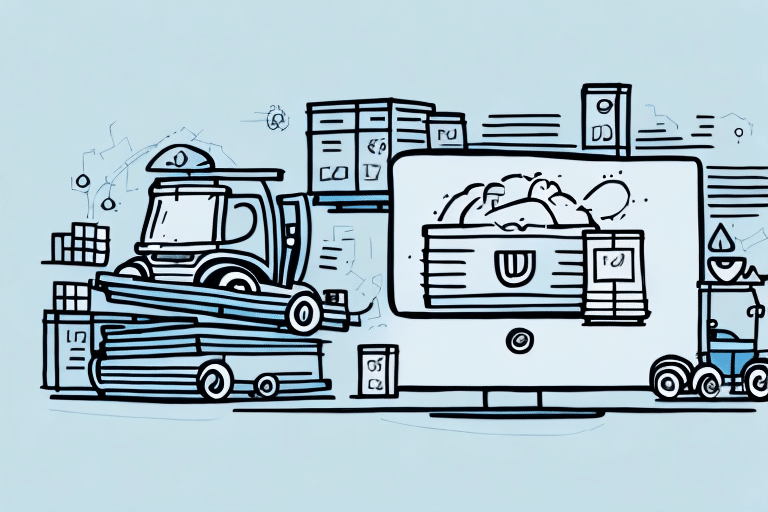How to Get Started Selling on Amazon: A Step-by-Step Guide
Are you interested in starting your own online business? Selling on Amazon can be an excellent opportunity for entrepreneurs, providing a platform to reach millions of customers across the globe. In this step-by-step guide, we'll cover everything you need to know to get started on your Amazon selling journey.
Why Selling on Amazon is a Great Opportunity for Entrepreneurs
Amazon is the world's largest online marketplace, generating billions of dollars in revenue every year. By selling on Amazon, you can tap into this vast customer base to reach buyers around the world. Additionally, Amazon handles many of the back-end operations like shipping and handling, which can save you time and resources. Selling on Amazon also provides unique insights into customer preferences, helping you refine your products and marketing strategies over time.
Access to a Massive Customer Base
With millions of active users, Amazon offers unparalleled access to potential customers. Leveraging Amazon's platform can significantly boost your product visibility and sales.
Comprehensive Fulfillment Services
Amazon's fulfillment services, including Fulfillment by Amazon (FBA), handle storage, packaging, and shipping, allowing you to focus on other aspects of your business.
Data-Driven Insights
Amazon provides robust analytics and reporting tools that offer valuable insights into customer behavior, helping you make informed decisions to optimize your business strategies.
Getting Started: Setting Up Your Amazon Seller Account
Creating an Account on Amazon Seller Central
To begin selling on Amazon, you need to create an account on Amazon Seller Central. This platform provides tools for managing your inventory, orders, and sales, as well as access to valuable resources and support. Familiarize yourself with its features to effectively navigate the platform.
Understanding Amazon's Fee Structure
Amazon charges various fees for selling on their platform, including:
- Referral Fees: A percentage of the sale price, varying by category.
- Fulfillment Fees: Charged for orders fulfilled by Amazon.
- Storage Fees: Applied to products stored in Amazon's warehouses for extended periods.
It's crucial to factor these fees into your pricing strategy to ensure profitability.
Product Selection and Research
Choosing the Right Product to Sell
Selecting the right product is critical to your success on Amazon. Focus on products that are in high demand with low competition. Consider your interests, expertise, and current market trends. Tools like Jungle Scout and Helium 10 can aid in identifying profitable niches.
Conducting Thorough Product Research
Research involves analyzing market demand, competition, and profit margins. Use Amazon's Best Sellers pages and external market research reports to gauge product viability. Additionally, consider the cost of production, shipping, and Amazon fees to ensure a healthy profit margin.
Creating and Optimizing Product Listings
Crafting Compelling Product Descriptions
Your product listings are vital for attracting customers. Create clear, concise, and compelling descriptions that highlight key features and benefits. Incorporate relevant keywords to improve search rankings.
Enhancing Visual Appeal with High-Quality Images
Use high-resolution images that showcase your product from multiple angles. Lifestyle images and videos can help customers visualize the product's use in real-life scenarios.
Utilizing Amazon’s SEO Tools
Leverage Amazon's product listing optimization tools to enhance visibility. Ensure your titles, bullet points, and descriptions are optimized with targeted keywords to improve search rankings and attract more buyers.
Inventory Management and Fulfillment
Efficient Inventory Management
Use Amazon's inventory management tools to monitor stock levels and prevent stockouts or overstocking. Tools like Inventory Source can automate inventory updates.
Choosing the Right Fulfillment Method
Decide between Fulfillment by Amazon (FBA) and Fulfillment by Merchant (FBM). FBA offers streamlined logistics, while FBM provides more control over the fulfillment process.
Pricing and Advertising Strategies
Developing Competitive Pricing Strategies
Analyze competitor pricing and market demand to set competitive prices. Use Amazon's Pricing Optimization Tools to adjust your prices dynamically based on market conditions.
Leveraging Amazon Advertising
Boost your product visibility and sales using Amazon's advertising options, including Sponsored Products and Sponsored Brands. These tools can help increase your product's reach and attract more potential buyers.
Customer Service and Managing Returns
Providing Exceptional Customer Service
Respond promptly to customer inquiries and address issues efficiently. Positive interactions can lead to favorable reviews and repeat business.
Handling Returns Effectively
Implement a clear and easy-to-understand return policy. Efficiently processing returns and refunds helps maintain customer satisfaction and trust.
Scaling and Growing Your Amazon Business
Expanding to International Markets
Consider leveraging Amazon's international marketplaces to reach a global audience. Research and comply with the regulations and market demands of each region.
Investing in Brand Building
Develop a strong brand identity to differentiate yourself from competitors. Utilize tools like Amazon Brand Registry to protect your brand and enhance your product listings.
Utilizing Analytics for Growth
Regularly analyze sales data and customer feedback to identify growth opportunities. Tools like Amazon Analytics provide valuable insights to inform your business strategies.
Common Mistakes to Avoid When Selling on Amazon
- Overstocking Inventory: Avoid holding excess stock that can lead to increased storage fees and potential losses.
- Neglecting Pricing Optimization: Regularly review and adjust your pricing to stay competitive and maximize profits.
- Poor Inventory Management: Ensure accurate tracking of inventory levels to prevent stockouts or overstocking.
- Ignoring Amazon’s Policies: Stay informed about Amazon’s guidelines to avoid penalties or account suspension.
Conclusion: Tips for Succeeding as an Amazon Seller
Getting started as an Amazon seller can be a challenging but rewarding journey. Utilize the resources and strategies outlined in this guide to navigate the competitive marketplace effectively. Focus on thorough product research, optimized pricing, exceptional customer service, and continuous learning to build a successful and sustainable business on Amazon.






















